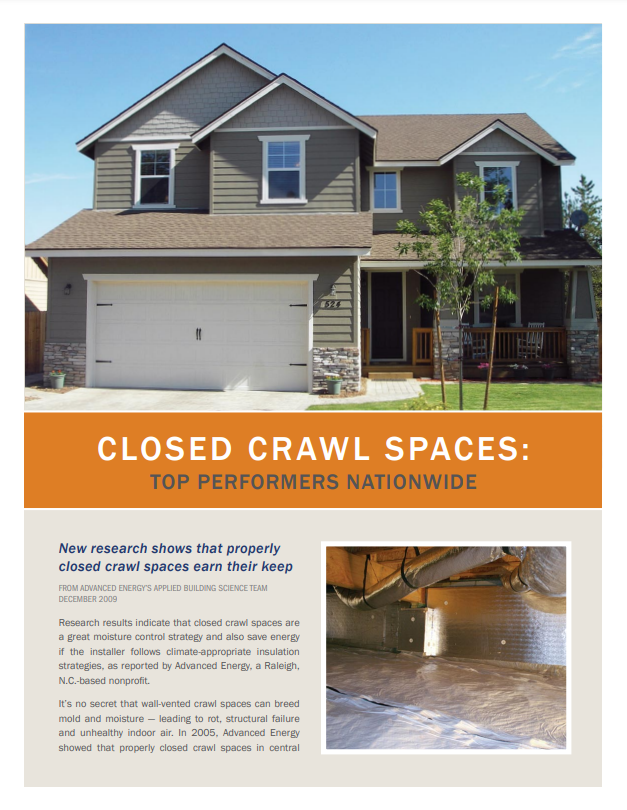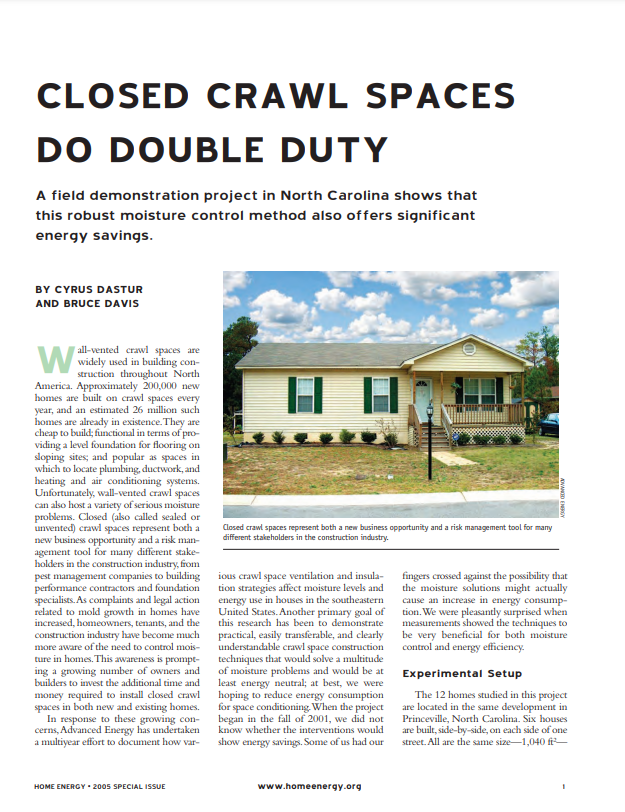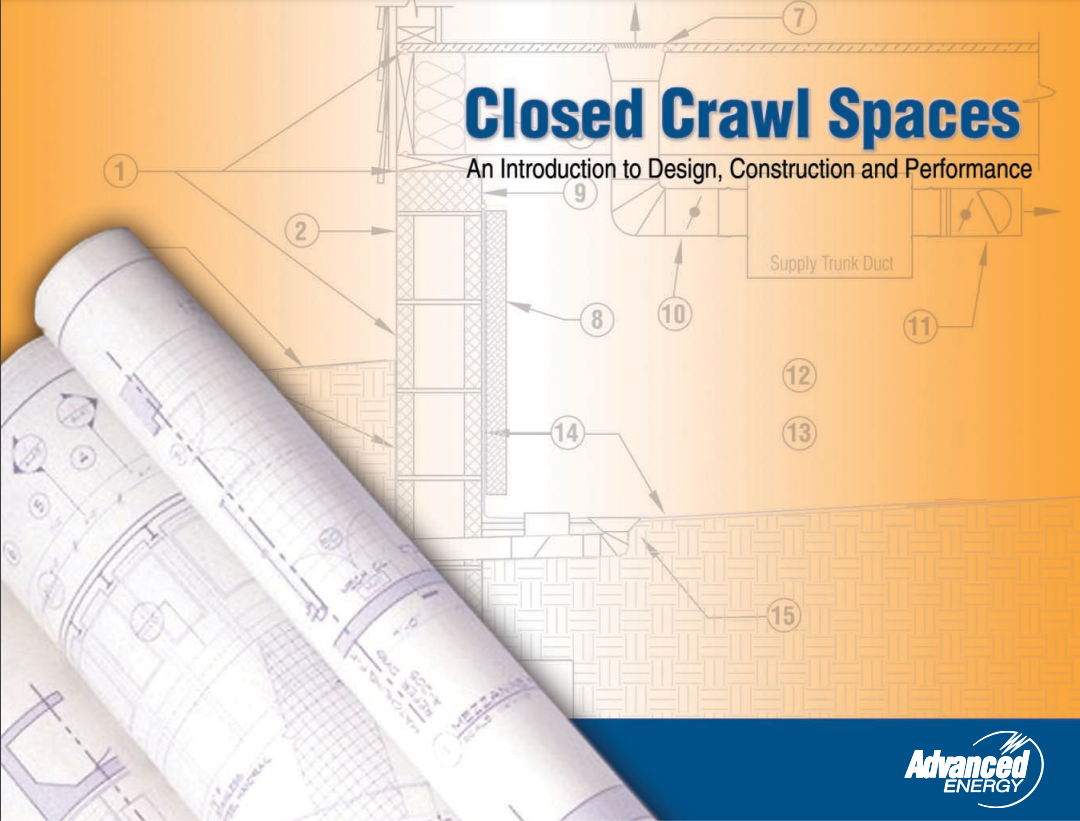
Why Crawl Space Encapsulation?
A Guide For
Southeast Virginia
Solutions Backed By
Scientific Research
Solutions Backed By Scientific Research

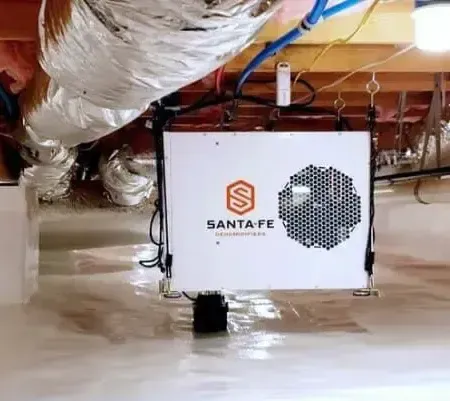
In Southeast Virginia we have a very humid and hot Summer season, and traditional wall vented crawl spaces allow hot humid air into the crawl space over those hot months. When this happens, condensation occurs. This condensation leads to mold & fungus growth, wood rot, poor indoor air quality, and damaged duct-work. In addition large amounts of rainfall and groundwater can magnify moisture issues in the crawl space.
The only solution that has been proven to prevent condensation and moisture damage is sealing off those foundation wall vents, and providing dry air to the crawl space. This is typically done in the form of a dehumidifier, but can also be done with conditioned air.
Encapsulation simply means sealing the foundation vents so outside air can't enter the crawl space. We then install a well sealed durable vapor barrier, and a dehumidifier. Some crawl spaces also require a French drain and sump pump to mitigate groundwater issues.
Why Patriot Crawl Space Repairs?
- We are a family owned and operated company. From customer service to quality control, the owners, April and Robbie McCarty, directly oversee your project.
- Since we are family owned and operated, we have low overhead. We are able to upgrade every aspect of your encapsulation, and do it for a lower price than the mega sized companies and national franchises. We offer a premium product at a lower price.
- We hire the best crawl space techs at the highest pay in the industry. We find that paying well, produces on time work at the highest quality.
- We use "grade-A" materials. From Santa Fe and Aprilaire dehumidifiers, to YourCrawlSpace cleaners and vapor barriers, quality is priority #1.
The Encapsulation Process
We will work with you to formulate an encapsulation plan that fits your needs and budget. Encapsulation includes some or all of the following steps.
- Remove trash and old or damaged insulation.
- Clean the crawl space wood to remove fungus.
- Install wall insulation, drainage mats, and a vapor barrier.
- Seal your crawl space vents and access holes.
- Install a commercial grade dehumidifier.
- Install crawl space lighting and a new access door.
- Provide you with an in-home humidity monitoring system.
- If needed, install crawl space drainage and a sump pump.
- Repair damaged wood or foundation support if needed.
We offer 2 crawl space encapsulation options based on your needs and budget.
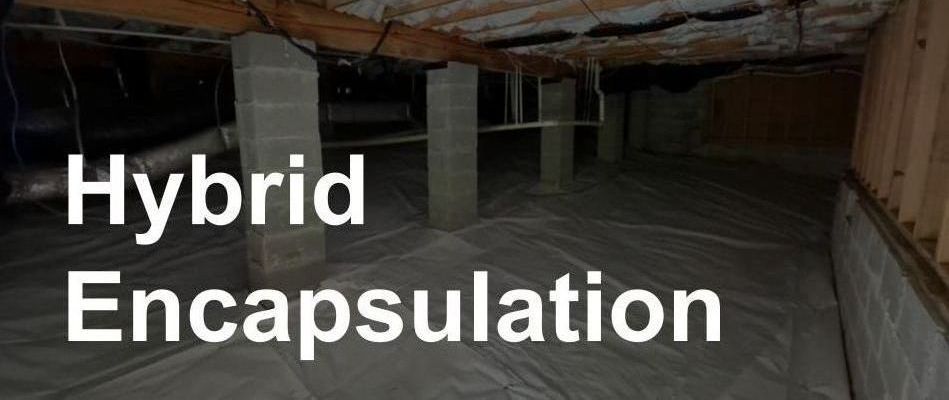
Hybrid Encapsulation Includes:
- Saves $$ if full encapsulation is not needed.
- A ground staked 12-mil woven vapor barrier.
- Vents and access holes sealed.
- Dehumidifier.
- Crawl space exhaust fan.
- Crawl space lights.
- Fully sealed crawl space door.
(MAY ALSO INCLUDE WATERPROOFING, FUNGUS CLEANING, AND/OR STRUCTURAL REPAIRS.)

Full Encapsulation Includes:
- Fully sealed 45-mil Geo Mat vapor barrier.
- Crawl space wall insulation.
- Vents and access holes sealed.
- Dehumidifier & Sump Pump.
- Crawl space exhaust fan.
- Crawl space lights.
- Fully sealed crawl space door.
(MAY ALSO INCLUDE WATERPROOFING, FUNGUS CLEANING, AND/OR STRUCTURAL REPAIRS.)
Frequently Asked Questions
What is the cost difference between Full and Hybrid Encapsulation?
Habrid encapsulation typically costs $8,000 to $12,000, and full encapsulation typically costs $14,000 to $20,000.
Which solution is right for you depends on moisture issues present at your home, as well as your budget.
One isn't necessarily better than the other. Full encapsulation is used when there are heightened groundwater and wall seal concerns, and an extended vapor barrier envelope is needed.
Every house is a little different so it is best to weigh the options for your home. We will provide you with pricing options once we have inspected your home.
Are there savings or tax credits?
Yes. Encapsulations eligible for a $1,200 tax credit under the 2022 Inflation Reduction Act home air sealing and insulation clause.
You may also save on your energy bills by sealing your crawl space vents, sealing ductwork, or adding insulation.
Do all encapsulations need a sump pump?
We require at least a sump pump in our full encapsulations because we don't want it to turn into a pool if you have a leake or flooding.
Hybrid encapsulations only need a sump pump if there is eveidence of water intrusion.
When there is evidence of water intrusion we typically recommend a perimeter drain and sump pump system. Water against your foundation walls is a serious threat to the structure going forward.
Why do we install a crawl space exhaust fan?
At around $300, a crawl space exhaust fan is dollar for dollar the best investment in our encapsulation system for several reasons.
1. The EPA recommends exhaust in all sealed crawl spaces. The reason for this is that even thoug the space is sealed, rodent, bugs, spiders, etc. can still get into the space at times. Water can puddle and form mold. An exhaust fan ensures that any comtaminated air is directed out of the space vs. flowing to the first floor of your home.
2. A crawl space exhaust fan helps circulate air from your dehumidifier. Since your dehumidifier sits in one spot, "dead spots" can occur at the far corners of your crawl space. The exhaust fan makes sure that the air flows through the entire crawl space.
3. The exhaust fan provides a great backup to your dehumidifier, creating negative pressure, where a small amount of household air is pulled into the crawl space, and out through the exhaust, helping to condition and dehumidify the space should your dehumidifier go out.
Do I need to do structural repairs before encapsulation?
Yes. If there are structural or wood repairs needed in your crawl space, you need to do those first. The reaons is that once you encapsulate the crawl space, it is likely to damage the vapor barrier if you conduct heavy repairs in the future, which will increase your cost.
Do I need to add crawl space insulation?
Once your crawl space is sealed, it will have roughly the same energy efficiency as a vented crawl space with floor insulation, even though you have removed the insulation.
Adding in wall insulation increases the energy efficiency of the home, but most homeowners say their floors and water are warmer in the winter and cooler in the summer once the vents and access holes are sealed without insulation.
Can I keep my existing floor insulation?
If you have a relatively clean crawl space or a newer home, you can keep the insulation.
If the insulation is moldy and damaged, or if you have widespread mold and fungus on the wood, it needs to come out.
Will a vapor barrier alone solve moisture issues?
No. A vapor barrier only helps keep ground moisture from migrating up toward the wood, but in our humid Virginia climate, condensation from hot summer air is the biggest moisture concern. A vapor barrier won't help with this, which is why we recommend sealing the vents and insalling a dehumidifier.
Do I need full encapsulation to comply with building codes?
There is a major difference between new construction building codes, and existing building codes.
In existing homes, crawl space work is only required to improve the situation in the space. In addition, if mechanical ventilation is provided via an exhaust fan, the space is not considered a sealed crawl space, it is still vented.
These nuances allow for full or hybrid crawl space encapsulation, while still being code compliant.
Whether you opt for full or hybrid encapsulation really depends on the moisture issues you are facing. We can help you determine a plan that is best for your home.
Do you have other upgrades available?
Yes. Upgrades may include battery backups for sump pumps, dimpled drain mats under the vapor barrier, wall board insulation, fans, etc. We will recomend a plan that best fits your home and budget.
Do I need a service plan?
Once you have encapsulated your crawl space and installed a dehumidifier, we recommend servicing the dehumidifier twice per year. You can either do that yourself, or have us do it.
Service plans are required for full warranty benefits to apply.
What type of warranty do you provide?
All warranties require a service plan. There are factory warranties on dehumidifiers and sump pumps.
We provide a 5 year warranty on dehumidifiers, condensate pumps, lights, fans, and sump pumps if you are on a service plan.
We provide a 15 year warranty on full encapsulation vapor barriers, so long as you are on a service plan. This warranty does not cover damage from sharp objects, dirt getting in from the door being left open, plumbing leaks, or catastrophic flooding, but if you have tape come loose or the vapor barrier malfunctions, we will take care of it.
All drain systems have a 20 year warranty with a continued service plan.
Structural repairs including piers, helicals, and wood repairs come with a 50 year material warranty, excluding natural disaster, flood damage, and wood damage due to leaks or lack of proper moisture control.
Proper moisture control includes encapsulation and dehumidifier on a service plan for crawl space wood, and a frech drain and sump pump if the crawl space is below grade or flood prone.
In Depth Research Publications
Call Us Today To Schedule A Free Inspection At 757-210-6043
Areas We Service
Chesapeake, VA
Norfolk, VA
Virginia Beach, VA
Chesapeake, VA
Hampton, VA
Newport News, VA
Yorktown, VA
Portsmouth, VA
Williamsburg, VA
Toano, VA
Newkent County, VA
Providence Forge, VA
Poquoson, VA
Gloucester County
Smithfield, VA
Isle of Wight, VA
Franklin, VA
Suffolk, VA
Surry County, VA
Southampton County, VA
Sussex County, VA
Areas We Service
Chesapeake, VA
Norfolk, VA
Virginia Beach, VA
Chesapeake, VA
Hampton, VA
Newport News, VA
Yorktown, VA
Portsmouth, VA
Williamsburg, VA
Toano, VA
Newkent County, VA
Providence Forge, VA
Poquoson, VA
Smithfield, VA
Isle of Wight, VA
Franklin, VA
Suffolk, VA
Surry County, VA
Southampton County, VA
Sussex County, VA
Areas We Service
Portsmouth, VA
Williamsburg, VA
Toano, VA
New Kent County, VA
Providence Forge, VA
Poquoson, VA
Chesapeake, VA
Norfolk, VA
Virginia Beach, VA
Chesapeake, VA
Hampton, VA
Newport News, VA
Yorktown, VA
Smithfield, VA
Isle of Wight, VA
Franklin, VA
Suffolk, VA
Surry County, VA
Southampton County, VA
Sussex County, VA
